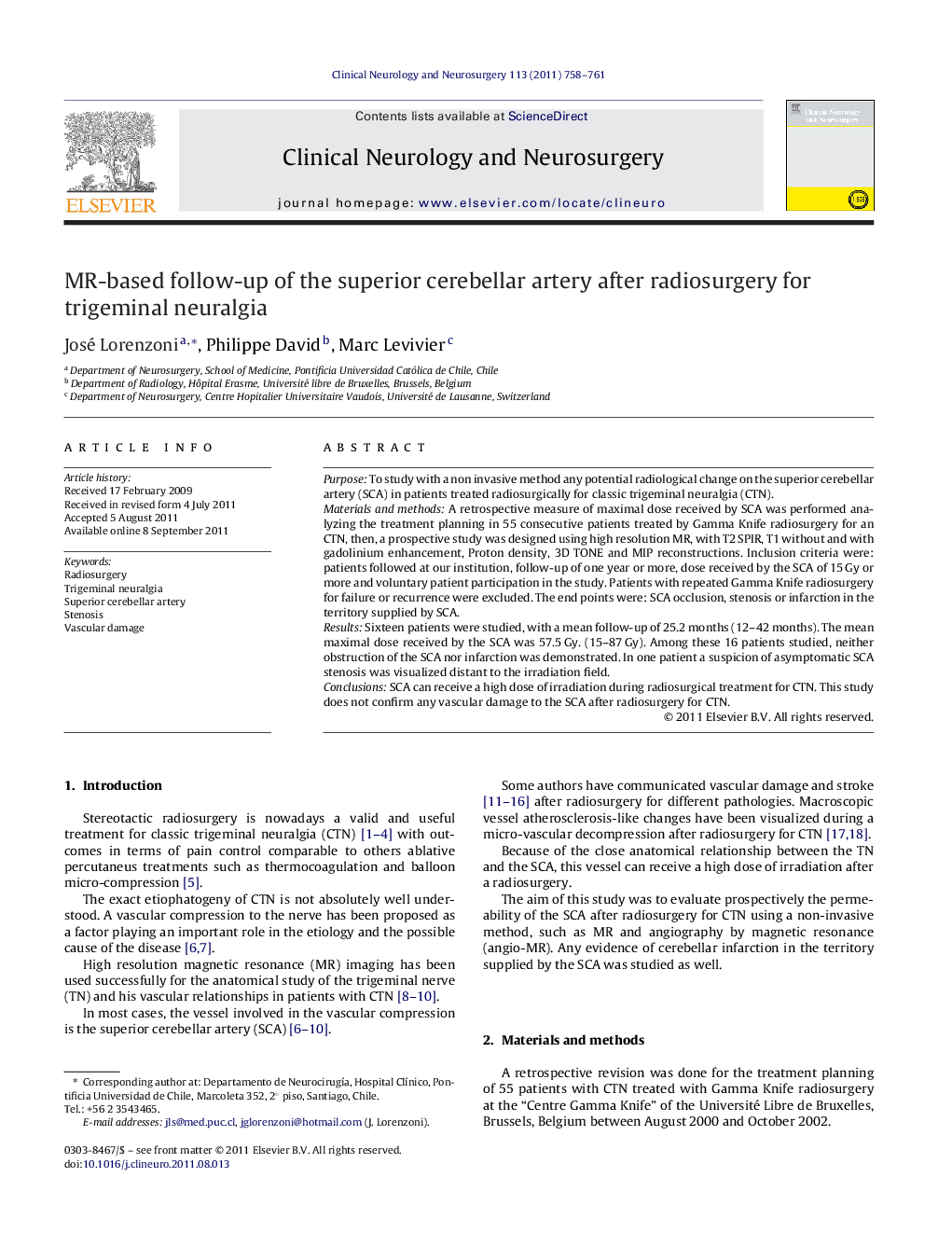| Article ID | Journal | Published Year | Pages | File Type |
|---|---|---|---|---|
| 3040990 | Clinical Neurology and Neurosurgery | 2011 | 4 Pages |
PurposeTo study with a non invasive method any potential radiological change on the superior cerebellar artery (SCA) in patients treated radiosurgically for classic trigeminal neuralgia (CTN).Materials and methodsA retrospective measure of maximal dose received by SCA was performed analyzing the treatment planning in 55 consecutive patients treated by Gamma Knife radiosurgery for an CTN, then, a prospective study was designed using high resolution MR, with T2 SPIR, T1 without and with gadolinium enhancement, Proton density, 3D TONE and MIP reconstructions. Inclusion criteria were: patients followed at our institution, follow-up of one year or more, dose received by the SCA of 15 Gy or more and voluntary patient participation in the study. Patients with repeated Gamma Knife radiosurgery for failure or recurrence were excluded. The end points were: SCA occlusion, stenosis or infarction in the territory supplied by SCA.ResultsSixteen patients were studied, with a mean follow-up of 25.2 months (12–42 months). The mean maximal dose received by the SCA was 57.5 Gy. (15–87 Gy). Among these 16 patients studied, neither obstruction of the SCA nor infarction was demonstrated. In one patient a suspicion of asymptomatic SCA stenosis was visualized distant to the irradiation field.ConclusionsSCA can receive a high dose of irradiation during radiosurgical treatment for CTN. This study does not confirm any vascular damage to the SCA after radiosurgery for CTN.
